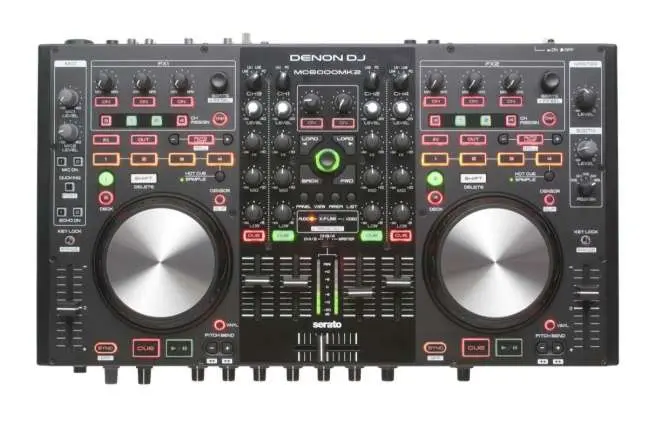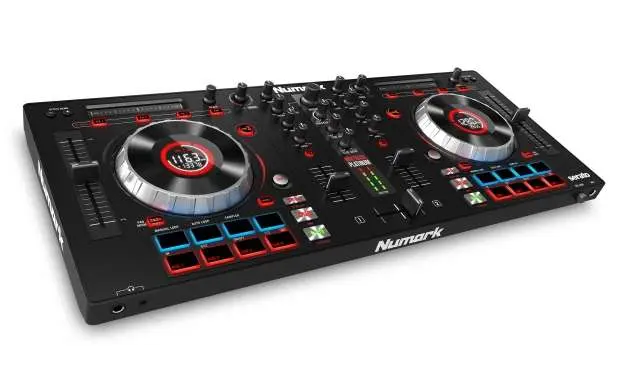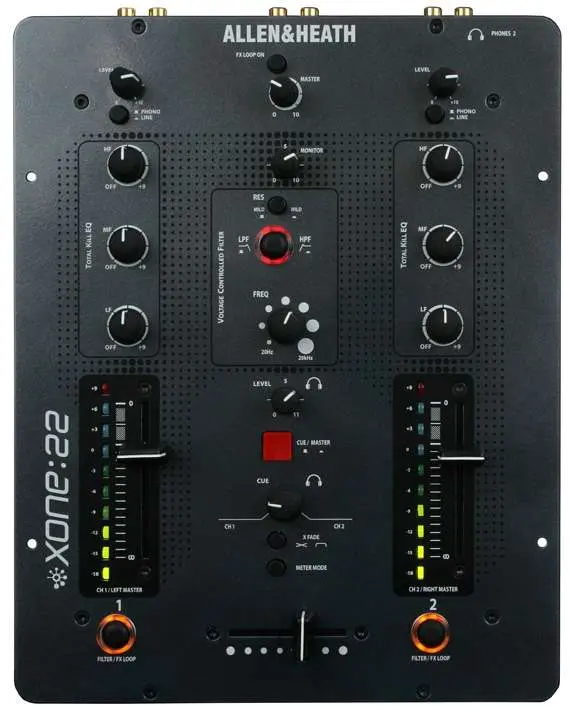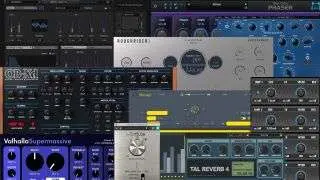
Which DJ mixer to buy?
See DJ mixers in the Muzyczny.pl store
A mixer is one of the most important devices used to work with sound. It is characterized by many necessary functions and an exceptionally universal application.

A mixer is one of the most important devices used to work with sound. It is characterized by many necessary functions and an exceptionally universal application. Currently, however, there is a whole lot of models available on the market, which does not make our choice easier. So how to correctly choose a mixer for our needs? More information below.
Types of mixers There are generally two main types on the market: stage and DJ. As the name suggests, we are interested in the latter. The DJ mixer, unlike the stage mixer, is characterized by a much smaller number of channels (usually no more than four), it has a different appearance and some functions. What is a DJ mixer and why is it worth buying?
In the simplest form, it is a device with a specific number of inputs and outputs, to which we can connect one or more signal sources (e.g. a player, turntable, telephone), thanks to which we can change their parameters. This signal then goes to the “common” output where all signals go.
Usually, the amplifier or power amplifier has one signal input, which prevents us from connecting more than one device, so we cannot move smoothly from one track to another, hence it is worth buying such equipment.
Number of channels The number of channels, i.e. the number of inputs to which we can connect a sound source and change its parameters. If you are a beginner DJ and just starting your adventure with playing, two channels are enough for you. This is the minimum number of inputs needed for proper mixing.
More complex mixers have a larger number of channels, but it is not always worth buying something exaggerated, if it does not apply to us. Usually, a greater number of channels can be found in equipment dedicated to professional tasks or hard evenings in clubs.

What are all these knobs for? The more extensive and more expensive the equipment, the more functions it has. Below is a description of these standard, commonly encountered elements, including
• Line Fader – is a vertical fader that adjusts the volume of a given channel. There are as many as there are channels in the mixer. Not to be confused with the crossfader shown below.
• Crossfader – this is the horizontal fader that can be found at the bottom of the mixer. It allows you to combine signals (sounds) from two channels. By moving the crossfader from one side to the other, we reduce the volume of the first channel, increase the second channel, and vice versa.
• Equalizer – A vertical row of pots / knobs usually located above the Line fader. It allows you to cut or strengthen certain parts of the bands, usually it consists of three potentiometers that are responsible for the individual colors of the sound, i.e. high, medium and low tones.
• Gain – potentiometer used to adjust the signal strength of the connected device. As you know, not all equipment generates the same signal value, some songs are louder, some are quieter. Simply put, the task of the gain is to adjust the volume of the connected device.
• Switch phono / Line, phono / aux, phono / Cd, etc – a switch that allows you to change the sensitivity of the phono input to universal and vice versa.
• Volume potentiometer – there is probably nothing to explain here. Output volume control.
In addition, we also find (depending on the model):
• Microphone section – usually has three or four knobs to adjust the signal level and tone.
• Effector – mainly found in high-end mixers, but not only. The effector is a device with an operation that cannot be described in two lines. With its help, we can introduce additional effects to our mix with the possibility of sound modeling.
• Control scale – also obvious. It shows us the value of the signals. When using the mixer, we should not exceed the 0db level. Exceeding this level may result in the formation of distorted sound which in turn leads to damage to our audio equipment.
Cutting curve potentiometers – adjusts the characteristics of the faders.
“Booth” output, sometimes master 2 – the second output, used for example to connect and control the listening volume.

Which model should i choose? There is no clear-cut rule here. First of all, it should be decided by the application, i.e. what we need it for. If we are starting the adventure with playing, it is best to get a simple, two-channel mixer with basic functions.
It is worth having a lot of cool goodies, such as an effector or filters, but in fact they will not be useful to us at the beginning of learning. In this case, we focus on the basics that must be mastered without exception. There will also be time for the rest.
The dominant manufacturer in this field is Pioneer and it is the equipment of this company that we most often meet. It must be admitted, however, that it is good, professional equipment not for every budget. Looking around from the many offers, it is worth paying attention to e.g. Reloop products, e.g. the RMX-20 model. For not too high money we get quite a good and successful product of this company.
Numark offers a similar quality at this price. The products of the mentioned Denon are a bit more expensive, like the X-120 or the Allen & Heath, like the Xone22.
It is obvious that more expensive mixers offer more goodies, are more durable and more technologically advanced, however, for amateur applications there is no need to purchase expensive equipment exaggerated.

Summation Mixers are the heart of the sound system and a key element of our console. We should choose it in accordance with our expectations and application. First of all, pay attention to the functions you need. Then we take into account the application and the conditions in which our equipment will be used
Playing at home, we can afford to buy a cheaper model, however, if we intend to present our skills to the public, it is worth adding extra money to a proven product of appropriate quality.





